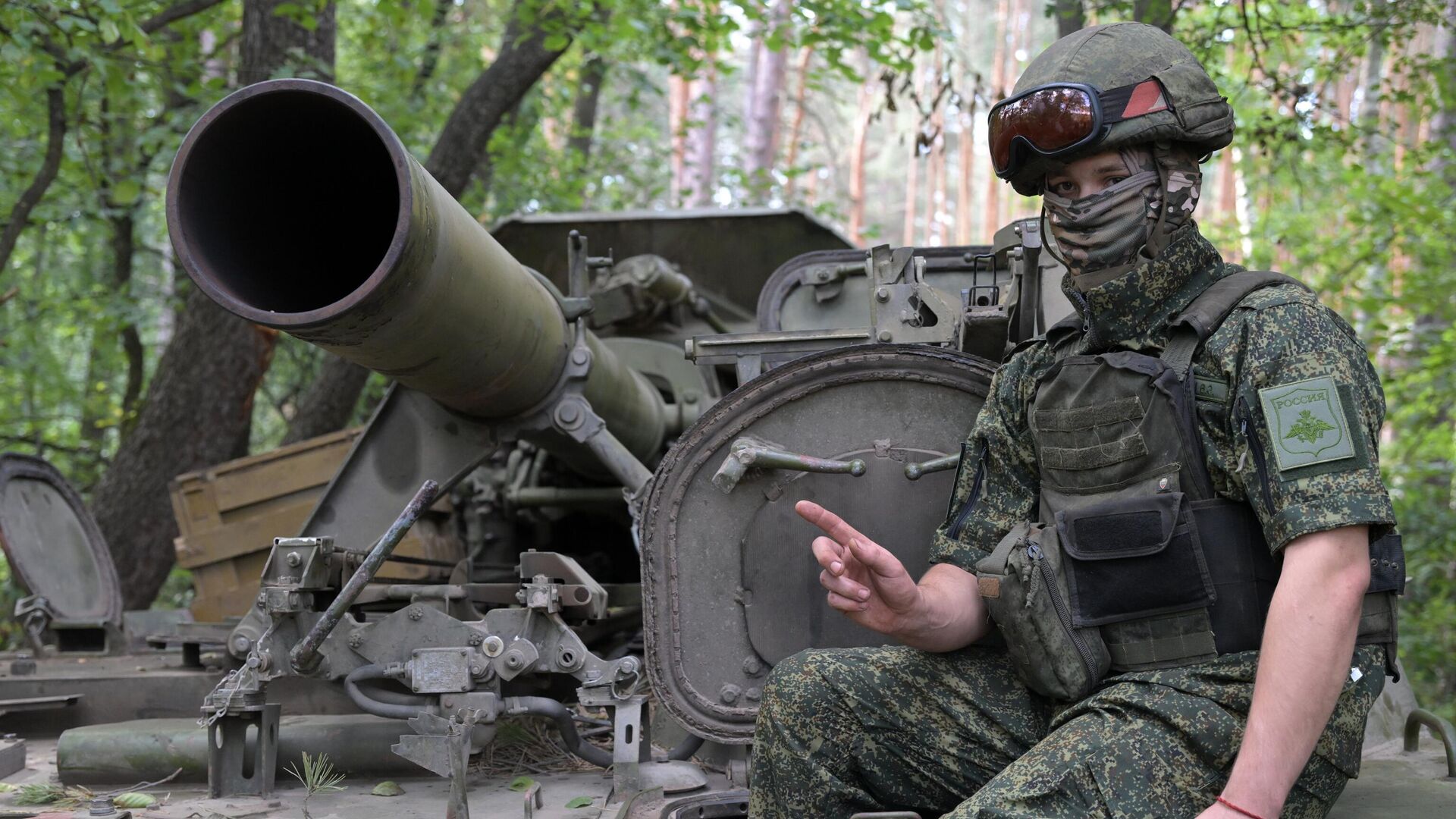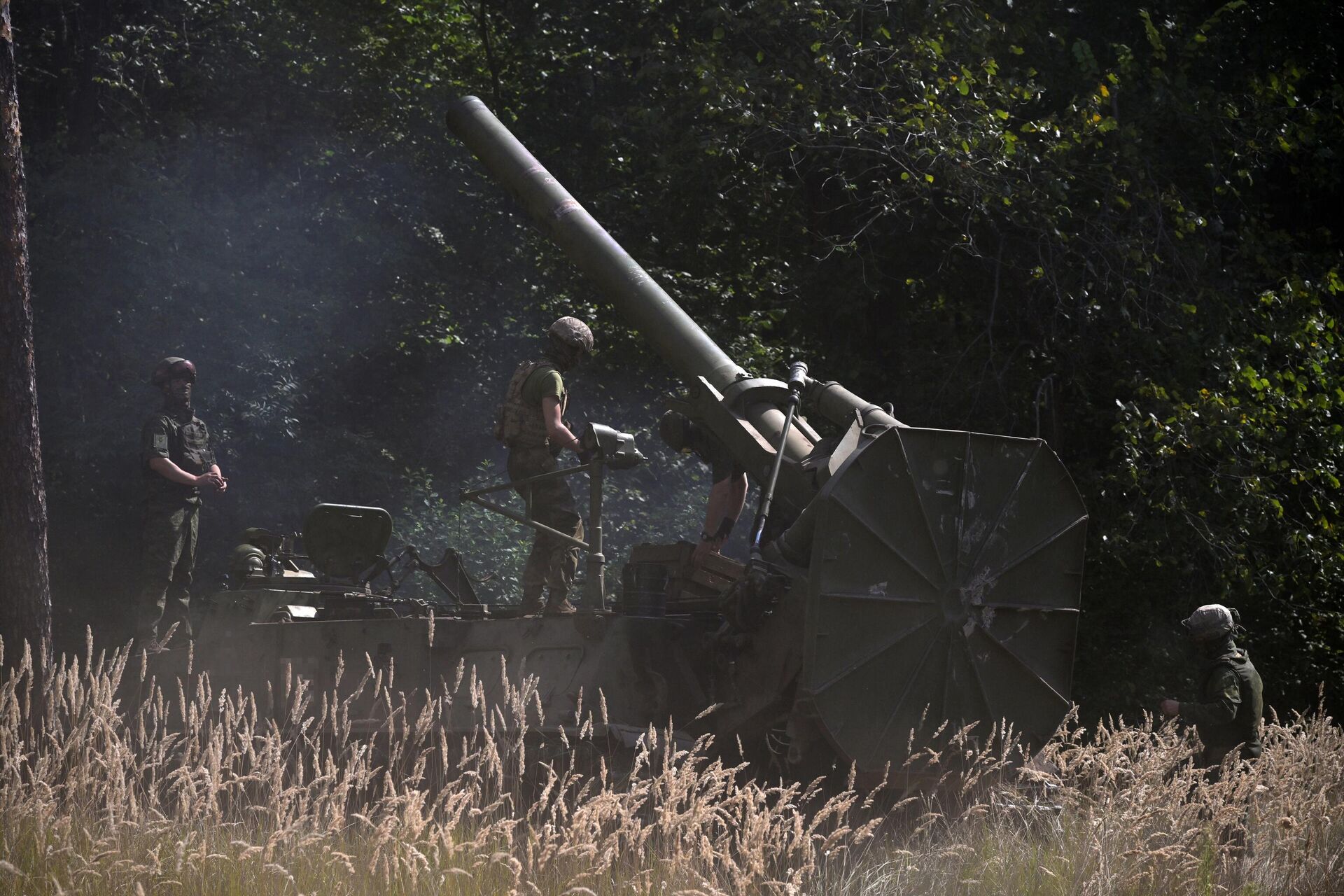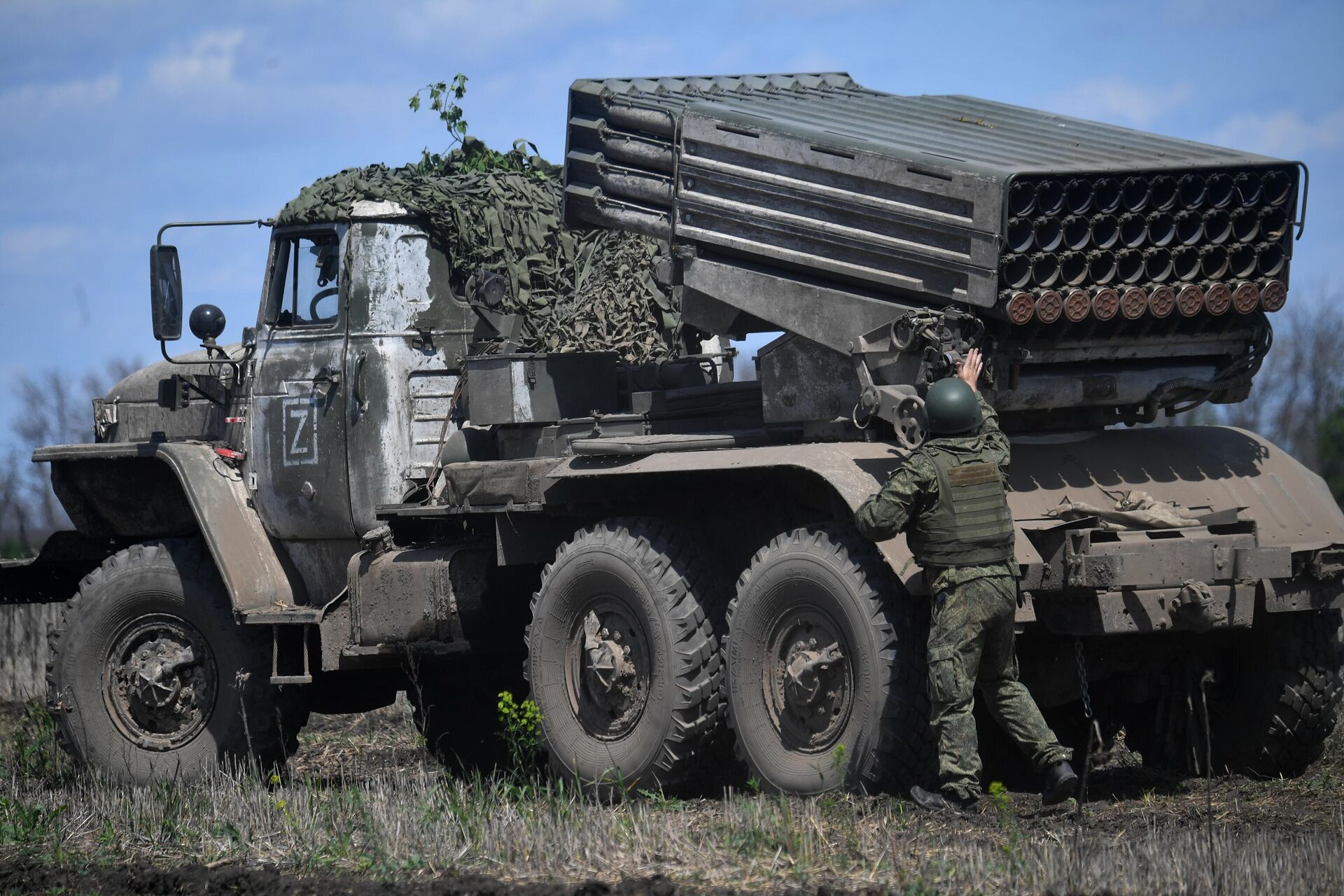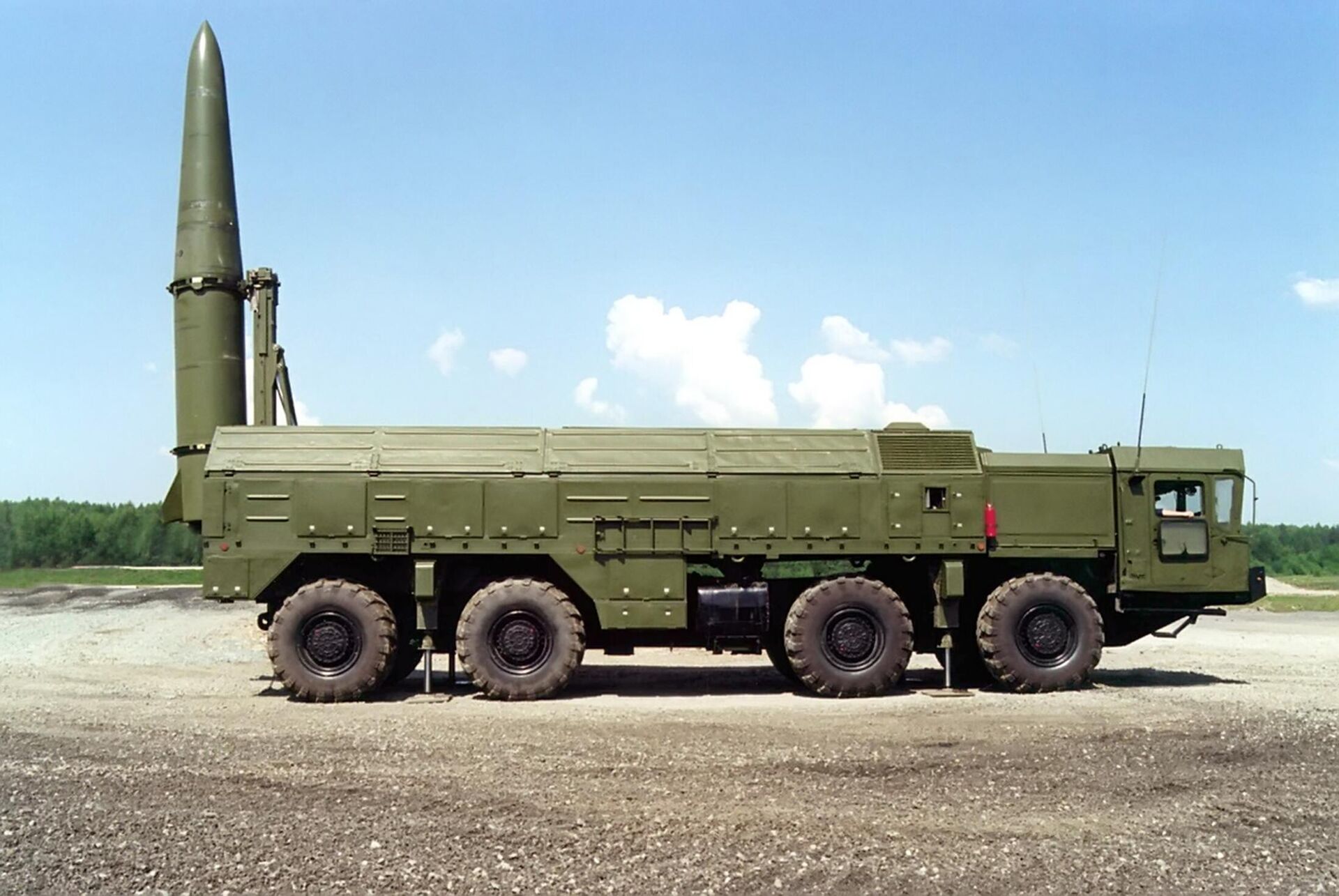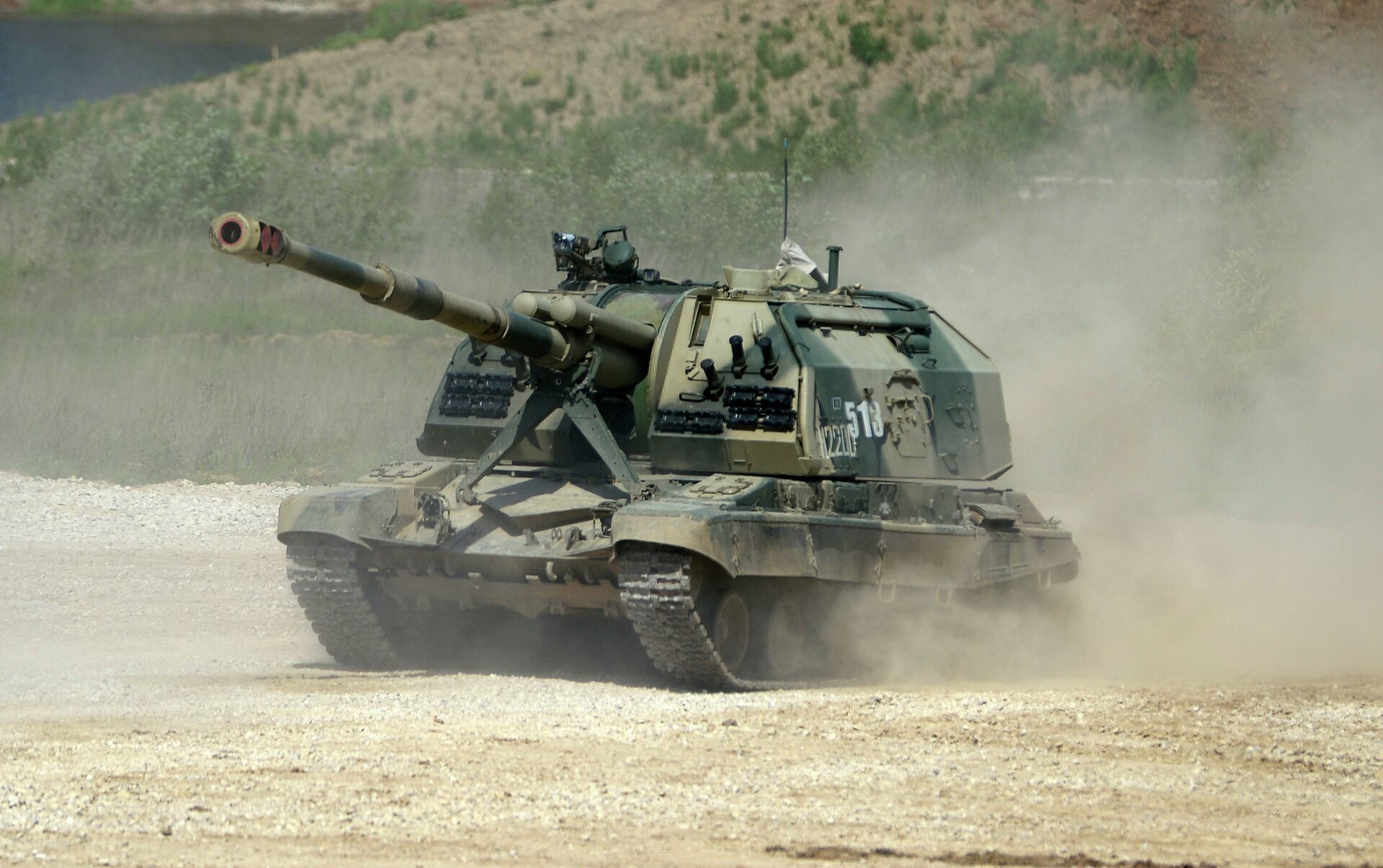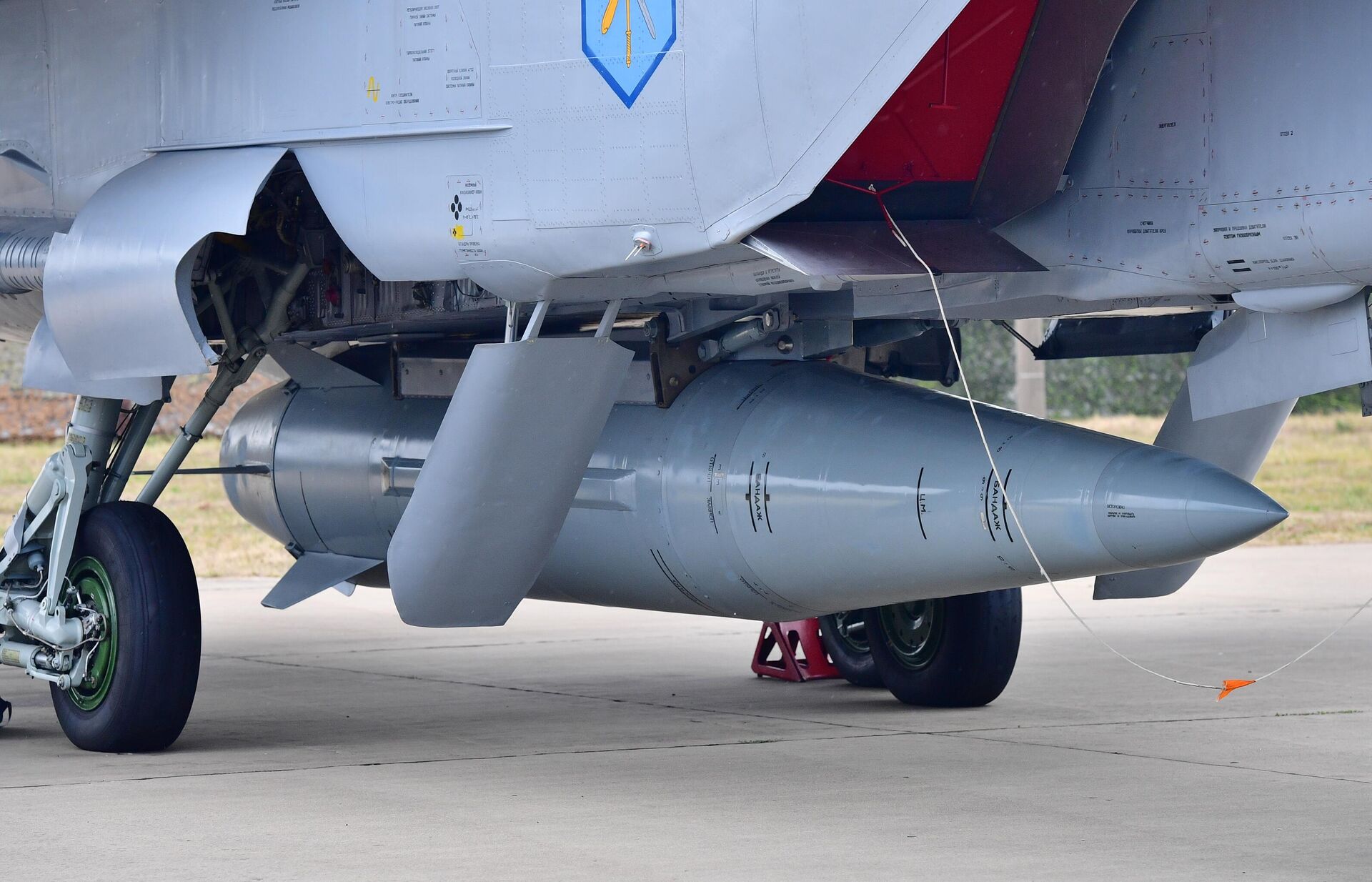https://sputnikglobe.com/20231119/from-tulip-to-tornado-which-artillery-and-missile-systems-are-used-in-russian-special-op-1115053219.html
From Tulip to Tornado: Which Artillery and Missile Systems Are Used in Russian Special Op?
From Tulip to Tornado: Which Artillery and Missile Systems Are Used in Russian Special Op?
Sputnik International
On November 19, the Russian Armed Forces celebrate Day of Missile Troops and Artillery. How are these weapons used in the Russian special military operation zone? Sputnik explores.
2023-11-19T10:53+0000
2023-11-19T10:53+0000
2023-11-19T13:05+0000
military
russia
ukraine
artillery
missiles
special operation
kinzhal missile system
tornado s rocket launcher
https://cdn1.img.sputnikglobe.com/img/07e7/0b/13/1115053044_0:0:3072:1728_1920x0_80_0_0_ce92b51dced97939908ca898a28d756b.jpg
It’s safe to say that Russian artillery and missile forces currently play an extremely important role in the Ukraine conflict, Alexei Podberyozkin, a military expert and director of the MGIMO University Center of Military and Political Studies, told Sputnik.When asked about the missions this branch of the army implements in the special operation zone, Podberyozkin mentioned: “High-precision weapons that destroy fortified areas” of the Ukrainian troops.These include enemy infantry hiding in trenches and dugouts, which are wiped out by Russian artillery and missile systems, according to the expert.Reports by Russia’s Ministry of Defense (MoD) indicate that in the course of the special operation, Russian forces use various types of artillery and missile equipment with the Ground Forces. Cannon Artillery Also known as non-rocket artillery, it includes the 152 mm howitzers Msta-B, Giatsint (Hyacinth)-B and D-20, as well as the 122 mm howitzer D-30 and the 100 mm anti-tank gun Rapira (Small Sword).In addition, Russian forces use the self-propelled artillery systems Gyatsint-S, Akatsia (Acacia) and Msta-S of 152 mm caliber, as well as the 122 mm Gvozdika (Pink) and the 120 mm 2S9 Nona systems.Also in place in the special operation zone are the self-propelled 203 mm 2S7 Pion (Peony) cannons and its modernized version 2S7M Malka, plus the world's only 240 mm self-propelled mortars 2S4 Tulpan (Tulip), which is equipped with 130 kg projectiles and has a range of 18 km (11 miles).MLRS Systems The multiple launch rocket systems include the 122 mm Grad (Hail) MLRS and its highly upgraded version, the Tornado-G, which has an increased range of 40 km (24 miles). The system also features automated aiming and navigation equipment.Rasmussen, for his part, called the Tornado-S “a little bit more accurate than the [US-made] HIMARS [High Mobility Artillery Rocket System].”Apart from the Grad, the Tornado-G and the Tornado-S, Russian troops use the 220 mm BM-27 Uragan (Hurricane) MLRS, which a range of 34 km (21 miles). Also being used in the special operation zone is the 300 mm Smerch (Twister) MLRS with a range of 70 km (43 miles).OTMS SystemsThis includes the Iskander-M mobile short-range ballistic missile system, which is designed to destroy enemy command posts, communications nodes, tactical aircraft parked on airfields and other critical targets at a distance of up to 500 km (310 miles).The system is equipped with two main types of missiles: the quasi-ballistic 9M723 with electronic warfare modules for radio interference and the ability to control the entire flight path, and the cruise missile R-500, capable of automatically sweeping around the terrain when flying at low altitude, which gives it low-vulnerability to enemy air defense systems.Kinzhal ComplexThe Kh-47M2 Kinzhal (Dagger) is a Russian hypersonic air-launched ballistic missile, with a range of up to 2,000 km (1,240 miles) and speed of up to Mach 10.The missile can carry either conventional or nuclear warheads and can be launched by the Tu-22M3 bombers or the MiG-31K interceptors.
https://sputnikglobe.com/20231119/watch-russian-uragan-mlrs-annihilate-ukrainian-positions-in-special-op-zone--1115052660.html
russia
ukraine
Sputnik International
feedback@sputniknews.com
+74956456601
MIA „Rossiya Segodnya“
2023
Oleg Burunov
https://cdn1.img.sputnikglobe.com/img/07e4/09/0b/1080424846_0:0:2048:2048_100x100_80_0_0_3d7b461f8a98586fa3fe739930816aea.jpg
Oleg Burunov
https://cdn1.img.sputnikglobe.com/img/07e4/09/0b/1080424846_0:0:2048:2048_100x100_80_0_0_3d7b461f8a98586fa3fe739930816aea.jpg
News
en_EN
Sputnik International
feedback@sputniknews.com
+74956456601
MIA „Rossiya Segodnya“
Sputnik International
feedback@sputniknews.com
+74956456601
MIA „Rossiya Segodnya“
Oleg Burunov
https://cdn1.img.sputnikglobe.com/img/07e4/09/0b/1080424846_0:0:2048:2048_100x100_80_0_0_3d7b461f8a98586fa3fe739930816aea.jpg
russian special military operation in ukraine, day of missile troops and artillery, multiple launch rocket systems, operational-tactical missile systems
russian special military operation in ukraine, day of missile troops and artillery, multiple launch rocket systems, operational-tactical missile systems
From Tulip to Tornado: Which Artillery and Missile Systems Are Used in Russian Special Op?
10:53 GMT 19.11.2023 (Updated: 13:05 GMT 19.11.2023) On November 19, the Russian Armed Forces celebrate the Day of Missile Troops and Artillery. How are these weapons used in the Russian special military operation zone? Sputnik explores.
It’s safe to say that Russian artillery and missile forces currently play an extremely important role in
the Ukraine conflict,
Alexei Podberyozkin, a military expert and director of the MGIMO University Center of Military and Political Studies, told Sputnik.
“For the Russian Armed Forces, this is the most significant military branch that is being used in the special military operation in Ukraine,” he pointed out.
When asked about the missions this branch of the army implements in the
special operation zone, Podberyozkin mentioned: “High-precision weapons that destroy fortified areas” of the Ukrainian troops.
These include enemy infantry hiding in trenches and dugouts, which are wiped out by Russian artillery and missile systems, according to the expert.
He was echoed by Earl Rasmussen, a retired US Army Lieutenant Colonel and International Consultant, who told Sputnik that he thinks “The Russian artillery and missile capabilities have been exceptional."
Reports by Russia’s Ministry of Defense (MoD) indicate that in the course of the special operation, Russian forces use various types of artillery and missile equipment with the Ground Forces.
These include self-propelled and towed howitzers and mortars, multiple launch rocket systems (MLRS) of all calibers, as well as operational-tactical missile systems (OTMS) fitted with ballistic and cruise missiles.
Also known as non-rocket artillery, it includes the 152 mm howitzers Msta-B, Giatsint (Hyacinth)-B and D-20, as well as the 122 mm howitzer D-30 and the 100 mm anti-tank gun Rapira (Small Sword).
In addition, Russian forces use the self-propelled artillery systems Gyatsint-S, Akatsia (Acacia) and Msta-S of 152 mm caliber, as well as the 122 mm Gvozdika (Pink) and the 120 mm 2S9 Nona systems.
Also in place in the special operation zone are the self-propelled 203 mm 2S7 Pion (Peony) cannons and its modernized version 2S7M Malka, plus the world's only 240 mm self-propelled mortars 2S4 Tulpan (Tulip), which is equipped with 130 kg projectiles and has a range of 18 km (11 miles).
Podberyozkin touted the Tulpan as a mortar with “fantastic accuracy," saying: “When I used to fire it, I managed to place one funnel next to another.”
The multiple launch rocket systems include the 122 mm Grad (Hail) MLRS and its highly upgraded version, the Tornado-G, which has an increased range of 40 km (24 miles). The system also features automated aiming and navigation equipment.
Podberyozkin told Sputnik that Russian troops stationed in the special operation zone also use the Tornado-S - “A unique and perfect long-range MLRS with a range of 120 km (72 miles).”
Rasmussen, for his part, called the Tornado-S “a little bit more accurate than
the [US-made] HIMARS [High Mobility Artillery Rocket System].”
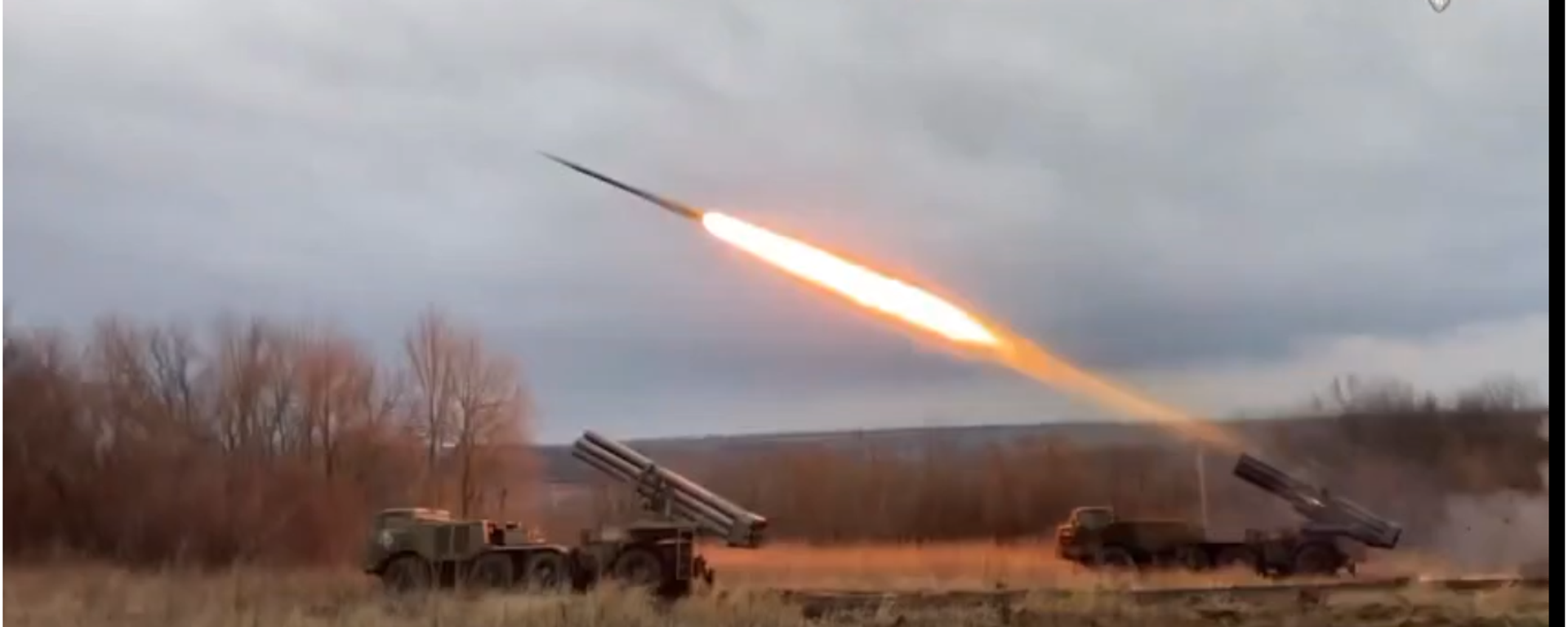
19 November 2023, 08:31 GMT
Apart from the Grad, the Tornado-G and the Tornado-S, Russian troops use the 220 mm BM-27 Uragan (Hurricane) MLRS, which a range of 34 km (21 miles). Also being used in the special operation zone is the 300 mm Smerch (Twister) MLRS with a range of 70 km (43 miles).
This includes the Iskander-M mobile short-range ballistic missile system, which is designed to destroy enemy command posts, communications nodes, tactical aircraft parked on airfields and other critical targets at a distance of up to 500 km (310 miles).
The system is equipped with two main types of missiles: the quasi-ballistic 9M723 with electronic warfare modules for radio interference and the ability to control the entire flight path, and the cruise missile R-500, capable of automatically sweeping around the terrain when flying at low altitude, which gives it low-vulnerability to enemy air defense systems.
The Kh-47M2 Kinzhal (Dagger) is a Russian hypersonic air-launched ballistic missile, with a range of up to 2,000 km (1,240 miles) and speed of up to Mach 10.
The missile can carry either conventional or nuclear warheads and can be launched by the Tu-22M3 bombers or the MiG-31K interceptors.
“It's a very impressive weapon system,” which is “very accurate, powerful and almost indestructible,” Rasmussen said, adding that thanks to its speed, the Kinzhal is “very difficult to intercept.”
